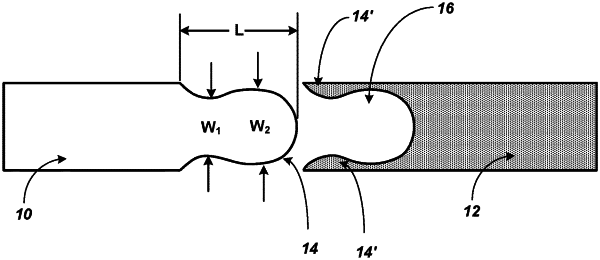|
1. A method of forming a mechanical joint, comprising: providing a first tube formed of nitinol wherein the first tube includes an end portion having a plurality of protruding first tube lobes and a plurality of first tube lobe recesses, wherein all the first tube lobes have a same size and geometry and wherein each lobe of the plurality of first tube lobes is in a first position, respectively; providing a metallic second tubular component including an end portion having a plurality of protruding second tubular component lobes and a plurality of second tubular component lobe recesses, wherein all the second tubular component lobes have a same size and geometry; wherein each lobe of the second tubular component lobes has a same size and geometry with each lobe of the first tube lobes such that the mechanical joint is formable with more than one arrangement of the first tube and the second tubular component relative to one another; cooling each lobe of the plurality of first tube lobes such that each lobe of the plurality of first tube lobes undergoes a phase change and expands to a second position, respectively; aligning each lobe of the plurality of first tube lobes while in the second position with each lobe recess of the plurality of second tubular component lobe recesses, respectively; heating each lobe of the plurality of first tube lobes such that one lobe of the plurality of first tube lobes returns to the first position and is disposed in one lobe recess of the plurality of second tubular component lobe recesses, respectively; disposing one lobe of the plurality of second tubular component lobes in one lobe recess of the plurality of first tube recesses, respectively; mechanically engaging the first tube end portion having the plurality of first tube lobes with the second tubular component end portion having the plurality of second tubular component lobes, wherein each lobe of the plurality of first tube lobes mechanically engages with two adjacent lobes of the plurality of second tubular component lobes and each lobe of the plurality of second tubular component lobes mechanically engages with two adjacent lobes of the plurality of first tubular component against axial separation on a common longitudinal axis, and wherein the metallic second tubular component is formed of stainless steel, cobalt alloy or nickel alloy.
|
